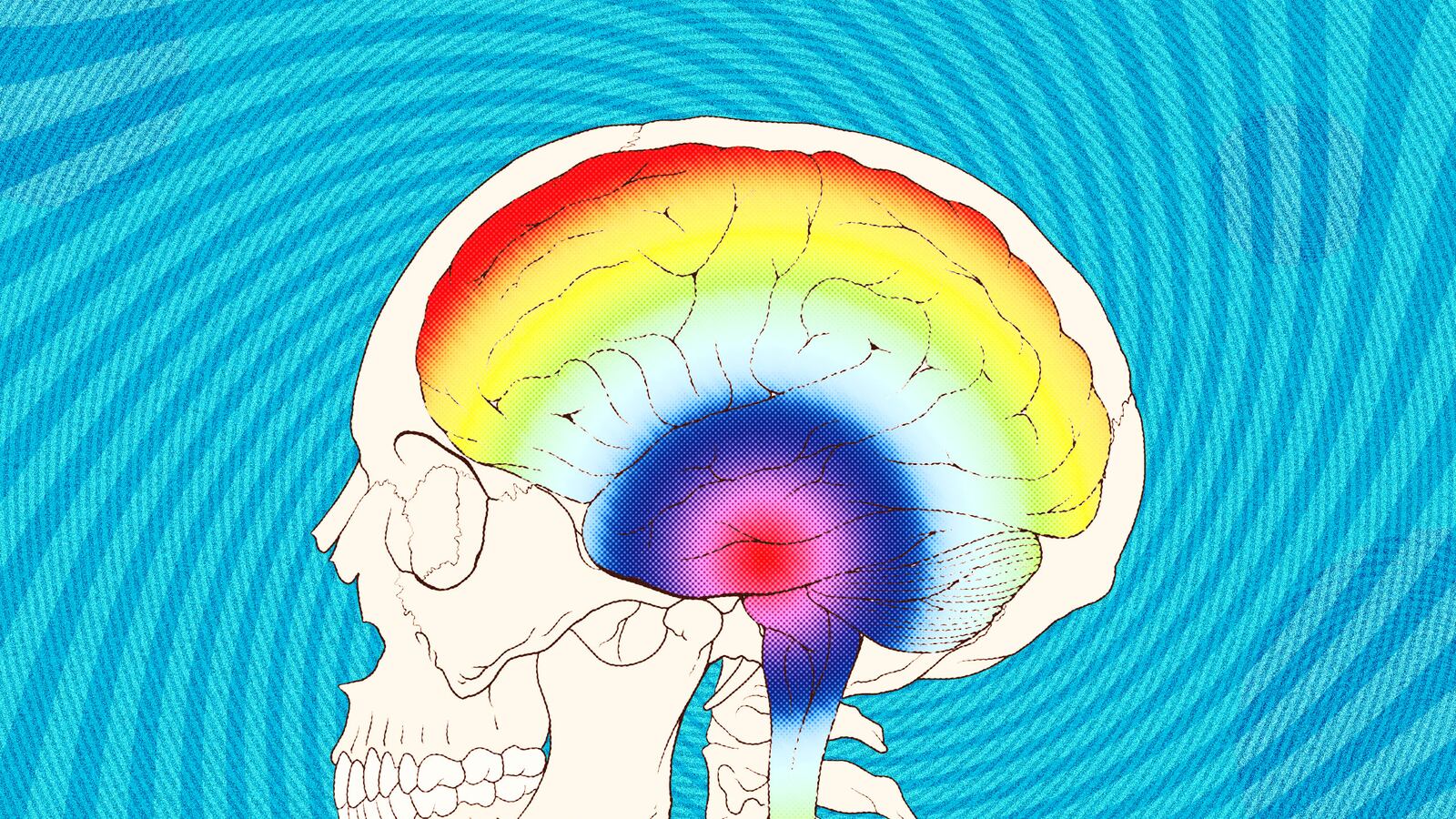Last week, a team of researchers developed a new implant that has the ability to wirelessly deliver drugs directly into the brain with the press of a button, like changing the channel on a TV.
No wider than a strand of human hair, the device combines brain implants with a remote control drug delivery system. With the ability to genetically modify individual neurons, the implant inevitably calls up dystopian fictions from the likes of Vonnegut’s Harry Bergeron or Huxley’s Brave New World.
To demonstrate the amount of control this device is capable of, investigators made mice walk in circles by injecting a morphine-like drug directly into their ventral tegmental area (VTA), a brain region responsible for motivation and reward.
With rapid technological advancements that tinker with the most complex organic structure in the known universe, serious moral and ethical questions are bound to arise. That’s where neuroethicists come in.
The Daily Beast reached out to several leading thinkers in the field of neuroethics to get their opinions on this astonishing (yet creepy-sounding) device.
One neuroethicist, Dr. Peter Reiner, told The Daily Beast that this newest advancement is “is no different than previous work that used electrodes or injections of substances into the brain (of animals), but does so with considerably greater finesse.” He called this latest development a “technical tour de force.”
However, Dr. Frederic Gilbert, a researcher in bioethics at the Australian Research Council, errs on the side of caution. In an email, he wrote, “As in many fields, the ethical questions are often raised too late in the development of novel technologies; optogenetics is no stranger to this.”
Optogenetics is a branch of neuroscience that uses photostimulation to control neurons that have been genetically sensitized to light. This new device has optogenetic capability.
Gilbert posed several ethical considerations, such as, does being an optogenetically implanted human being make you any more or less human? With respect to the new wireless implant, who or what will be in control of pressing the button that dispenses the drugs? If it’s an automated system that’s in charge of dosing and not you, the patient, how do you retain a sense of agency?
Though this particular device has only been tested in mice, if it were to be translated for human use, obtaining consent from human patients—especially if they’re mentally ill—may be problematic. “Getting someone to consent to get an automated system implanted in their brain might not be similar to those we are currently using for deep brain stimulation or related brain devices,” Gilbert noted.
That brings up another question: What kind of drugs will be dispensed and for what purposes? Serious moral objections to the non-medical use of cognitive enhancement pharmaceuticals such as Adderall and Ritalin—that make people “speedier” and more focused—have been made in the past. These drugs are argued to give people an edge over everyone else, and only those with resources can access them.
While Reiner is assured that ethical terrain in these areas has been well covered, Gilbert and his colleague Dr. Robert Sparrow at the Australian Research Council call on scientists to keep in mind the somber history of neuroscience and psychosurgery.
In the 1930s and ’40s, doctors and the press lauded electroconvulsive therapy and frontal lobe lobotomy as miracle treatments; even President John F. Kennedy’s sister, Rosemary, was lobotomized. But these interventions were eventually used in punishing ways on marginalized people. In many cases, they caused irreparable damage to patients’ brains, changing their personhood in fundamental ways.
“While we shouldn’t let this history prevent us from acknowledging the benefits these disciplines have produced and their potential for ameliorating human suffering in the future,” Sparrow said, “it is also a salutary reminder that brilliant researchers can be appallingly naive about the purposes to which their discoveries are likely to be put.”
Dr. Michael Bruchas is a senior researcher on the team responsible for the new implant in question. I asked if he and his colleagues consult with ethicists like Sparrow and Gilbert about their work.
“In this particular case, we have not spoken to someone directly,” Bruchas said. “But I have about 20 people in my lab meeting and we usually have these kinds of ethical discussions informally, about the implications of what we’re doing.”
He mentioned that many trainees in his lab are doctoral students who are required to have ethical training about some of these questions being raised.
Bruchas told me he looks forward to the future, and hopes such devices will one day be used in human subjects. “We are developing this with the intent of helping mental health disorders and neurological disease. We’re putting this knowledge out there with the idea that this is going to help people.”
Still, Bruchas is cautious about the potential magnitude of his work. “You do want to be thinking about these issues because this space does move very rapidly, and if it moves too rapidly without taking a step back and thinking about it, that’s a risk you take.”






